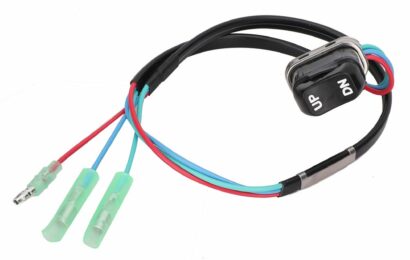A rusted spark plug won’t run or conduct enough charges required to power an engine. Rusting on spark plugs affects the overall performance of several engines and could limit or stall several essential machine operations.
Rust on spark plugs could occur for several reasons like exposure to water, leaky plug housing, bad lubrication or inferior threading. Proper maintenance is required to prevent rusting in spark plugs and guarantee smooth performance of your engine.
Access to correct information is vital to prevent rusting on spark plugs. In this article, you’ll get relevant details about rusty spark plugs and how to spot and prevent oxidization on spark plugs.
What Does Rust on Spark Plug Mean?
Rusting on spark plugs signifies a faulty engine air cleaner, plug housing, intake, or cylinder. A rusted spark plug might also mean there’s an engine block crack or tear in the cylinder head or manifold.
What Causes a Rusty Spark Plug?
Oxidation is the major cause of rusty spark plugs and is evident in threads that have been exposed to water. Oxidization of spark plugs could happen gradually or in sudden fashion.
Water, over-torqueing, poor threading, inferior electrodes, and more could cause rusting on spark plugs.
How to Remove Rust on Spark Plug
To remove rust on a spark plug, you’ll need a flat screwdriver, sandpaper (minimum 220-grit), a wire brush, and brake cleaner.
Step 1: Turn off your engine and remove spark plug
If the rusted spark plug still runs, turn off your engine to gain access to it without a shock hazard. Next, get a spark plug socket and unscrew the rusted spark plug from its housing.
After removing the rusted plug, dip a piece of lint-free cloth into its housing to check for any signs of rusting. If the spark plug housing isn’t rusted, there’s a great chance that the rusting isn’t engine related.
Step 2: Use a flat screwdriver and needle to remove dirt from spark plug electrode
Use the flat end of your screwdriver to scrape rusting off the plug’s electrode. It will be difficult to use screwdrivers to remove rust and debris from an electrode’s interior, so you’ll need a needle.
Gently use the needle to remove dirt around the spark plug electrode. You can also use a can of compressed air to blow out removed dust and dirt from your plug’s electrode.
Step 3: Sand electrode
Next, place sandpaper beneath your electrode and your plug. Move the sandpaper back and forth to remove any lingering rust on your spark plug.
Step 4: Clean boot
After completing the steps above, you’ll need to clean your spark plug’s boot. Wiping down your spark plug’s boot with a spray of brake cleaner could do the trick.
It’s worth noting that the steps above will work best when used to tackle low-range rusting. Advanced rusting might not be easy to resolve, but the steps describe above usually prove effective.
How to Remove Rust on Spark Plug Head
Step 1: Disconnect spark plug from engine
Get a spark plug socket to remove its electrode end from your engine. Don’t forget to unplug the boot connector on your spark plug before unscrewing it from its housing.
Step 2: Clean rusted spark plug
Remove rusting from your spark plug’s head as possible with a wire brush flat screwdriver. Next, inspect the head of your spark plug to see if spaces around the electrode are blocked.
Try to scrape this rusting off with a needle to create enough space for an anti-rust solution to work properly.
Step 3: Apply anti-rust solution
Get anti-rust solution on your spark plug electrode with a spatula. Next, allow it settle into your spark plug for about an hour to penetrate corrosion around its electrode.
Step 4: Rinse spark plug
Next, rinse your spark plug with a small amount of fuel in a shallow container. Rinsing the spark plug with fuel ensures excess anti-rust solution doesn’t remain on its electrode.
Step 5: Inspect electrode and repeat (if necessary)
Next, check the electrode of your spark plug to see if there are any signs of rusting. If the rusting is still visible, follow steps 1 – 4 to get the rusting out of your spark plug’s head.
But if you inspect the spark plug head and can’t find signs of rusting, clean out its boot and electrode.
Common Wet Spark Plug Symptoms
Lack of engine acceleration is a major symptom of wet spark plugs. Wetness on a spark plug will impede an engine’s ability to transmit its charges properly, and cause stop-start operation.
Hard starting engines are also caused by wet spark plugs. Water or oil around a spark plug electrode can cause rough idling and engine misfiring too.
Wet spark plugs also become common when an engine suffers injector leaks, bad piston rings, or sudden engine flooding.





